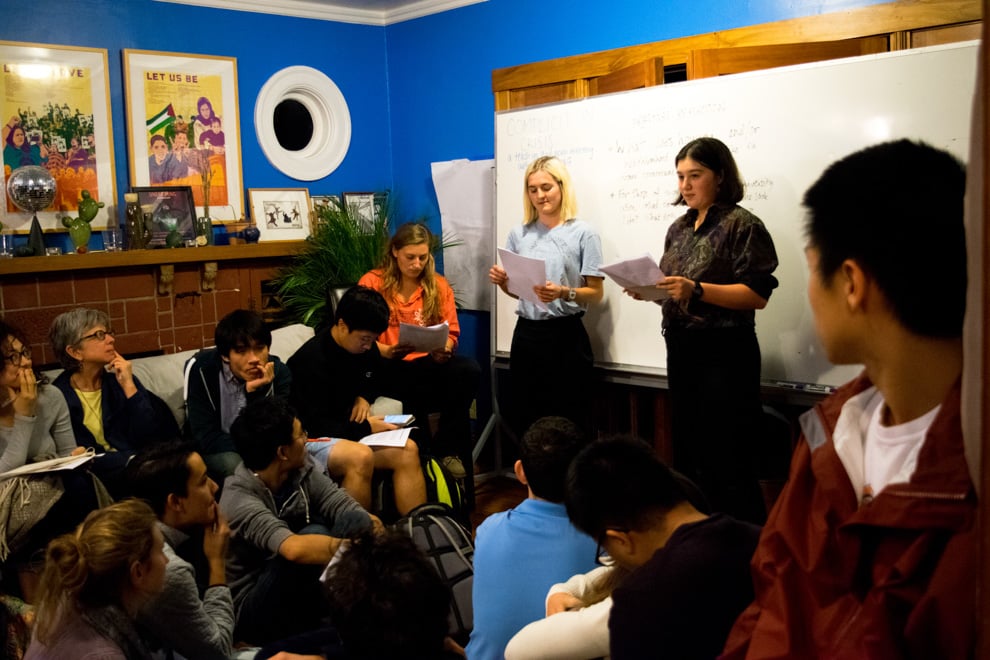In a recent meeting of the Stanford Coalition for Planning an Equitable 2035 (SCoPE 2035), members discussed how Stanford’s proposed land use and construction efforts in its General Use Permit (GUP) might contribute to current housing and transportation issues in the local area.

The GUP plans to authorize construction of 2.275 million square feet of academic and academic support space, 3,150 on-campus housing units and 40,000 square feet of childcare centers and trip-reducing facilities over 4,000 acres of Stanford land over the next 17 years. Santa Clara County found in its recent Draft Environmental Report (DEIR) that of a list of over 80 issues that may arise due to GUP, only four rate as “significant” effects: construction noise, conservation of historic buildings, increased congestion on freeways and increased traffic on intersections. But SCoPE worries that the impact on traffic congestion and housing for the local community and Stanford staff may exceed those considered by the report.
“What SCoPE would like to see is definitely full mitigation of all the significant impacts, and we also are currently looking through the DEIR to see … whether there are questionable conclusions [Santa Clara County] made based on the data,” said John Zhao ’18, a member of SCoPE.
Catherine Palter, associate vice president of land use and environmental planning, also expressed ambivalence toward the potential impacts of the University’s proposed land expansion.
“All of those [issues] are conservatively [classified as] significant and unavoidable because we don’t know if they’re going to happen or not,” she said.
Since 2001, Stanford has met the “No Net New Commute Trip standard” set in the 2000 GUP, the most recent GUP as of present. This means the University has had no net increase in peak hour and peak direction trips each year. The “peak hour” is defined as the one-hour period of time with the highest volume of traffic at the beginning and end of each day, which typically falls between 7 a.m. and 9 a.m. and 4 p.m. and 6 p.m.
If Stanford does not continue to meet the No Net New Commute Trip standard, an additional 2,558 peak trips per day are expected to be added to the current traffic to by 2035.
“If we are successful [in meeting the standard], that goes away,” Palter said. “And we think we are going to be able do it.”
Despite Stanford’s track record with the No Net New Commute Trip standard, Stanford students said that community members may be affected by traffic increases that are not reflected in the statistics.
“They only look at the peak commute hours,” said Zhao. “One thing [that] is not captured with that is a lot of workers have irregular hours.”
Palter acknowledged the general increase in traffic in the area, but added that Stanford is working with agencies such as Caltrain to come up with additional solutions to reduce traffic congestion.
“It is getting much harder for people to get here to campus […] just in the overall congestion on the freeways,” she said.
The issue of housing and population growth, though rated “less than significant” in the DEIR, is another topic of concern among area residents and SCoPE 2035 members. The DEIR anticipates a demand for 2,435 off-campus housing units, which could displace residents in surrounding neighborhoods such as East Palo Alto, Delhaven and North Fair Oaks as construction of new academic buildings brings in more students, faculty and staff.
“For every person that isn’t housed by Stanford, they will have to be participating in the local housing market, which is already squeezed,” Dan Sakaguchi ’16 M.S. ’17 said.
SCoPE 2035 expects that there will be increased pressure on the housing market as a result of population growth, causing rent increases and reducing access to affordable housing.
In an attempt to mitigate the effects on affordable housing, Stanford will maintain the Stanford Affordable Housing fund — a fund they have been contributing to since the 2000. For every square foot it builds, Stanford must contribute $20 for construction of off-campus affordable housing in the local region.
Palter also highlighted the positive impacts of the GUP — the DEIR predicts vehicle air pollutants, vehicle miles travelled and greenhouse gas emissions will decrease by 2035. Nonetheless, Palter acknowledges that it would be impossible to fully mitigate Stanford’s environmental impact on the area.
“An EIR assumes there will be an impact in the environment. You hope it’s less than significant, but it’s all about a worsening [of conditions],” Palter said. “[The DEIR tries to] find mitigation measures to reduce the impact as much as [we] can.”
Currently in the sixth stage of the approval process, the county is accepting written and oral comments on their assessment of the impact until Dec. 4, 2017, based on which it will develop an revised EIR. Both the EIR and GUP will be sent alongside the application to a public hearing by the Santa Clara County Planning Commission and final review by the county Board of Supervisors.
Contact Julia Ingram at jmingram ‘at’ stanford.edu.
